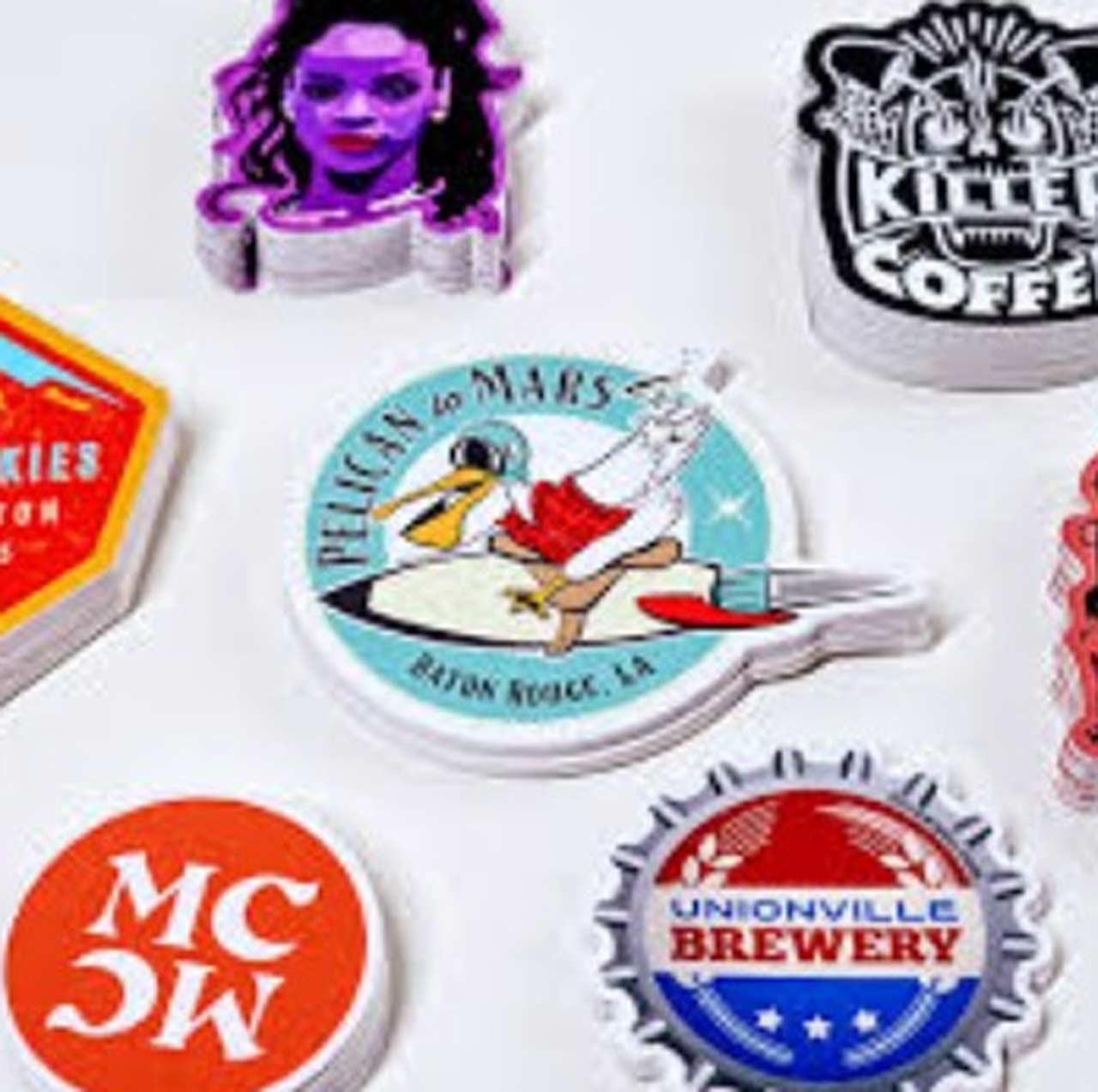
From colour theory to typeface, we will investigate the psychology of successful sticker design in this blog, including how to develop bespoke sickers that stand out, interact, and successfully communicate a message.
Colours’ Role in Sticker Design
Stickers’ design depends much on colour. Colours arouse emotions and may affect how someone views a business or message. Marketing and branding make extensive use of this psychological idea often referred to as colour psychology.
Red is the colour connected with urgency, passion, and intensity. It’s typically utilised in food-related branding as it attracts people and may cause feelings like excitement or even hunger.
Blue: Often associated with professionalism, composure, and confidence is this colour. Blue is a frequent colour used in custom stickers by companies in IT, healthcare, and finance as it symbolises dependability and safety.
Yellow is a colour that denotes hope and contentment. It’s vivid and striking, which would help draw younger viewers or for goods connected with pleasure and amusement.
Green represents nature, health, and development. Businesses engaged in organic goods, environmental concerns, or wellness could pick green for their own stickers to capture those ideals.
Choosing the appropriate colour scheme for your sticker design is essential as the colours you apply will affect the reaction and feeling of your audience. They should coincide with the message of your brand and the feelings you want to arouse in your consumers.
Value of Dimensions and Shape
Furthermore very important psychologically are your stickers’ size and form. Different forms may set off different emotions; hence, knowledge of this can assist to design more successful custom stickers.
Often seen as nice and accessible are round stickers. For companies trying to present a friendly image, its softer feel from the lack of harsh edges might be great.
Stickers in square and rectangular forms are seen to be more official and ordered. For instructive stickers or those with more intricate patterns, they are perfect as they provide more area for text and graphics.
Designed to suit the contour of a brand or design, die-cut stickers They are ideal for branding as they usually have more distinctive look and appeal. Custom stickers seem more unique and stand out thanks in part to their tailored form.
Typography: Clearly expressing your message depends much on the typeface—that is, the style of the text used in sticker design. Fonts may express a great spectrum of thoughts and feelings.
Characterised by tiny lines at letter ends, serif fonts are classic and project expertise and authority. Many times, they are utilised by companies trying to project dependability and established reputation.
Sans-serif fonts are ideal for companies that want to seem sleek, simple, and accessible as they are neat and contemporary. These typefaces are perfect for bespoke stickers with limited space as they are generally simpler to grasp at tiny sizes.
Often seen as beautiful, imaginative, or whimsical, script typefaces replicate handwriting. Still, they should be utilised carefully in sticker design as, at tiny quantities, they may sometimes be difficult to read.
Selecting the correct typeface for your bespoke stickers guarantees that your message will be remembered, readable, and visually appealing as well.
Simple Design Against Complexity
Regarding sticker design, less is frequently more. Minimalism in design emphasises simplicity and clarity, therefore enabling viewers to quickly grasp the idea.
Minimalist designs depend on strong typeography, colours, or a single stunning picture and are neat, with few components. Their simplicity of recognition and memory helps them to be effective for branding needs. Simple designs guarantee that your message is unambiguous and not lost in clutter if you are running a marketing campaign with customised stickers.
Complex designs: These may be used in certain situations, particularly for highly complex or creative bespoke stickers meant for a niche market. Still, most of the time too much intricacy will overwhelm the audience and reduce the message’s potency.
Knowing the psychology of design balance enables one to create personalised stickers that effectively convey the message without burdening the audience with pointless information.
Establishing Emotional Bonds via Visualisation
Another very effective instrument in sticker design is the usage of images. Visuals are a strong tool for delivering a message or eliciting an emotional reaction as human brains digest pictures much quicker than words.
Photographs of people, animals, or items help the viewer to establish a personal connection. While an image of a product may quickly portray what your company is providing, a picture of a happy face might inspire good emotions.
Depending on the tone you choose to convey with your own stickers, illustrations and icons could be stylised, abstract, or whimsical. Many times, icons represent concepts rapidly without many words needed. A leaf icon could, for instance, represent environmental friendliness.
Carefully chosen pictures and drawings will improve the emotional communication capacity of your sticker, therefore increasing its memorability and efficiency.
Consistentity and Branding
For companies, consistent branding is really essential. The general look and messaging of your brand should guide your bespoke stickers. This means using the same colour schemes, typefaces, and images across all of your stickers as you would in any other marketing materials. Consistency guarantees that every time someone sees your sticker, they instantly connect it with your business, therefore fostering awareness and trust.
Location and Application
At last, an often disregarded element of sticker design is where and how the stickers will be utilised. Your stickers will be seen differently depending on the surroundings. A personalised sticker meant for interior usage, say on a laptop or notebook, could need a different design strategy than one meant for outdoor use, like on a vehicle or window.
Because they will be seen up close, indoor stickers may be more vivid and detailed.
Outdoor stickers call for designs that shine out even from a distance and durability. For this environment, simple, strong designs with less detailed intricacy work well.
Conclusion
Knowing the psychology of good sticker design can help your own handmade stickers have much more impact. Stickers that not only look amazing but also successfully convey by carefully evaluating colour, shape, typeface, and images and matching them with the message and objectives of your company. Whether your audience is utilising them for personal expression, branding, or marketing, appealing to their emotions, impressions, and instincts can help you succeed.








